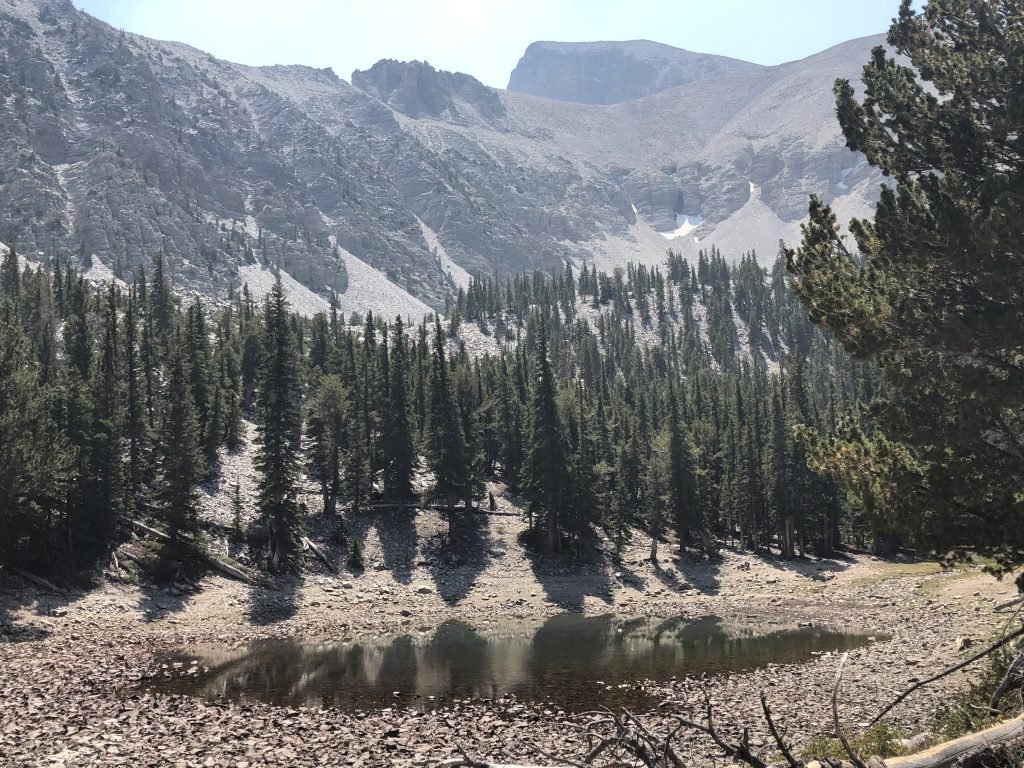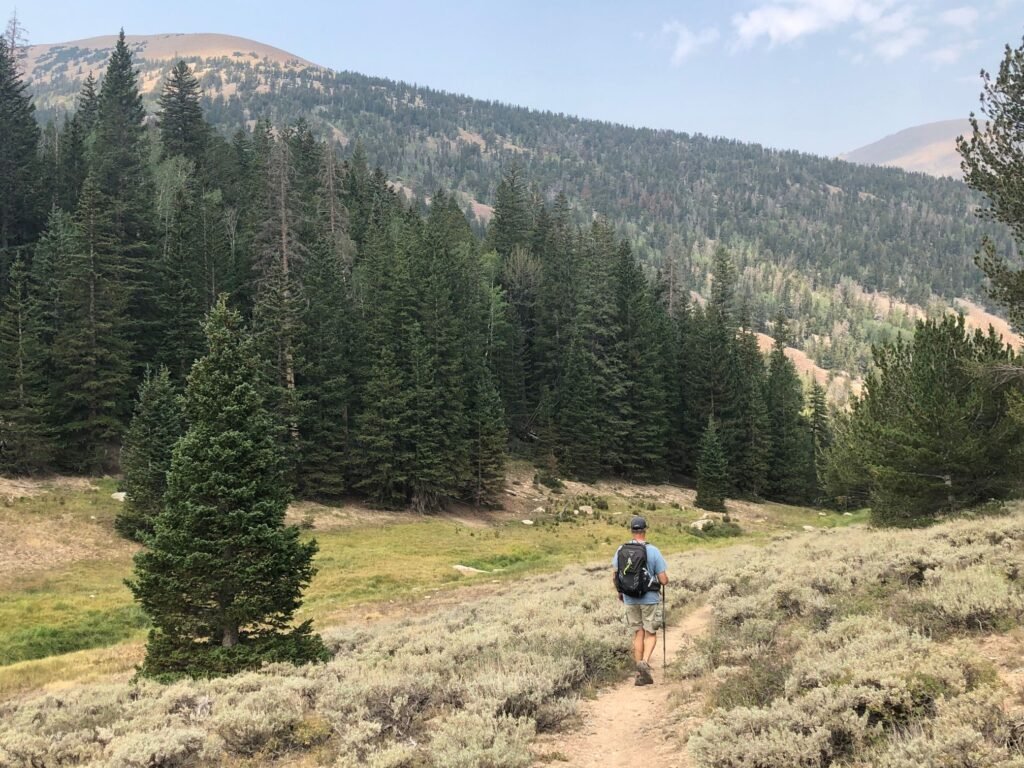
Find an oasis in a sea of sagebrush at Great Basin National Park

Somewhere in the middle of nowhere is Great Basin National Park. One of the most remote national parks in the system, Great Basin is located on the Nevada-Utah border. It takes some effort to reach this place because it’s not near much of anything. You’ll travel on lonely, desolate stretches of road for miles without a sign of life, or services, so come prepared with a full tank of gas and provisions.
Curiosity was the primary motivation behind my trip to Great Basin in late summer. That and the fact I was already going to be on the road touring various parks of the west. I had read about this unique park and its diversity of landscape, but no one I knew had actually been there. I needed to see it for myself.
The drive to the park was somewhat monotonous – a never-ending sea of sagebrush and barren lands – and I grew skeptical of the rewards promised me in the images I had drooled over beforehand. Would this end up being like some of the photos they take of houses for sale that make them appear so much better than the actual reality? I hoped not.
Fortunately, the pictures don’t lie. Great Basin exceeds expectations, offering everything from lakes and forests to towering peaks and even limestone caverns. It’s a veritable desert mountain island with a variety of natural features and ecosystems that will surprise first time visitors.
Geographically, the park is part of a vast region of valleys and narrow, craggy mountain ranges. The entire area actually stretches from California’s Sierra Nevada to Utah’s Wasatch Mountains and consists of many basins. Great Basin National Park represents only a section of this expanse, approximately 77,000 acres, and protects the South Snake Range east of Ely, Nevada.
This rugged landscape boasts thirteen peaks above 11,000 feet. Freezing temps and snow are facts of life at these elevations. The plants that exist survive challenging conditions, such as poor soil, thin air, intense winds and a short growing season. Life clings close to the ground and the flora is dwarfed.
Trees make their homes in hollows or cavities, and those that can be found in the higher echelons are hardy souls. The bristlecone pines, for example, are known for their endurance and longevity, with life spans that can exceed several thousand years. They are the oldest living things on earth. Interestingly, the trees that are highest up survive longer than their counterparts in the lower realms.
To see this stalwart species up close, hike the trail to the bristlecone grove. On the way, you’ll pass under some pines and then gradually climb to an area with impressive views of the valley below. Next, you’ll come to a rock field where the trees become sparser. You’re above 10,000 feet now. After some switchbacks, the first bristlecones appear and soon you’ll reach the grove.
These highly adaptable trees are noticeable for their smooth, yet gnarled trunks, and twisted and contorted forms. Their needles, which are about an inch to an inch-and-a-half long and in groupings of five, cover the whole branch. As you walk around the looped path, there are interpretive signs explaining that the trees survive because their wood is very resinous and dense, making them resistant to such things as insects, fungi and rot. And they need very little nutrients. Instead of decaying, the trees become worn and polished by the elements. After their death, they may remain standing for thousands of years.
The signs give the age of the trees, by providing a birth date and sometimes the year of their death. One for example, said, “Born 1300 B.C. Died 1700 A.D.”
If you head further up the mountain, you’ll get a glimpse of another of Great Basin’s treasures – Wheeler Peak Glacier. This is the only glacier in Nevada and one of the southernmost glaciers in the country. It’s in a large bowl at the base of Wheeler Peak, but don’t expect an immense ice edifice like those you might associate with Antarctica. This one’s basically a block of ice covered by piles of loose rocks.
Thousands of years ago, Wheeler Peak Glacier was a behemoth. Climate change, however, has caused it to erode and gradually, it is disappearing. Today, people often refer to it as a “rock glacier.”
You can also hike up to Wheeler Peak, the second tallest mountain in Nevada at 13,063 feet. But, if that’s a stretch for you, you can take the Wheeler Peak Scenic Drive, which leads to the face of the peak. Pullouts along the way provide plenty of phot-opps of several mountains and the Snake Valley.
Use the drive to also access a variety of trails, including the popular Alpine Lakes Loop. The latter takes you past two picturesque lakes, Stella and Teresa, with views of Wheeler Peak as a backdrop. In late summer, when I did the hike, the lakes had very little water and were more like ponds, but the setting was still memorable.
Another nice hike is Baker Creek Loop, where you can experience several different ecologies. The loop passes through sage, aspen groves and mixed pine forests. An expansive meadow with splendid views is one of the highlights, along with the wild turkeys!
Great Basin also has an underground world. Lehman Caves is known for its formations, including stalactites, stalagmites, columns, soda straws and draperies. It’s also famous for its shields, rare wonders of stone that are comprised of circular plates fastened together like clam shells. The park normally offers tours of the cavern, but unfortunately, the cave is currently closed due to the pandemic. A definite reason to make a return trip.
Due to its remote location, the park receives less than 200,000 visitors a year – a far cry from the millions that flock to Yellowstone and Yosemite. If you want solitude, this is the place. There’s also no entrance fee because of the low visitation count.
When it comes to accommodations, there are campsites in the park, but no other lodging. Outside and within a reasonable distance to the park, there are just a few choices. I stayed at Hidden Canyon Retreat, about a thirty-minute drive from the park. It’s a great property in a scenic area, with a number of nice amenities, including a pool and hot tub. Rooms are clean and spacious, without that sterile hotel feel.
Wildlife abounds on this sizable ranch and sightings of mule deer, wild turkeys and golden eagles are common. Instead of the usual breakfast buffet, the owners have adjusted to the present conditions and offer vouchers to redeem for purchases at their small, onsite store, or to be used at the Great Basin Café in the park.
The nearest town to the park, Baker, is about five miles away. Calling it a town, though, is a bit of an exaggeration. This teeny hamlet, with a year-round population of around seventy hardy folks, serves as the very limited service area for Great Basin. Its claim to fame in my opinion is Kerouac’s, a real find on the back-roads of Nevada.
This gem of a restaurant, named after one of the most irreverent road trippers in our country’s history, is a destination in itself. Owners Jake Cerese and Kate Claeys view Kerouac’s “an homage to life on the American road and to feeling at home in unexpected places.”
The restaurant offers delicious, made-from-scratch dishes, plus a variety of creative cocktails in a remodeled, turn-of-the-century house. An added bonus is the multi outdoor seating areas.
The menu is limited, but the fare is top notch, with juicy burgers on house made brioche buns and artisan pizzas, along with such side accompaniments like crispy, fried Brussel sprouts, roasted broccolini and fresh-cut fries. Save room for dessert, and treat your sweet tooth to the daily fruit crisp (a la mode, of course!), or the decadent s’mores cookie bar.
If you go:


























































